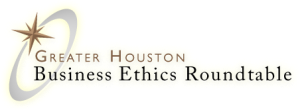 I continue my Great Structures Week with focus on structural engineering innovations from ancient Rome. I am drawing these posts from The Teaching Company course, entitled “Understanding the World’s Greatest Structures: Science and Innovation from Antiquity to Modernity”, taught by Professor Stephen Ressler who said “When I think of Rome, the first image that comes to mind is an arch.” It is present in aqueducts, in the triumphal arches that adorn the city of Rome, in the city gates and even in the Coliseum.
I continue my Great Structures Week with focus on structural engineering innovations from ancient Rome. I am drawing these posts from The Teaching Company course, entitled “Understanding the World’s Greatest Structures: Science and Innovation from Antiquity to Modernity”, taught by Professor Stephen Ressler who said “When I think of Rome, the first image that comes to mind is an arch.” It is present in aqueducts, in the triumphal arches that adorn the city of Rome, in the city gates and even in the Coliseum.
The arch was a major engineering advancement because the prior method for traversing horizontal distance was the beam, which was limited in its use. Ressler notes “because the arch carries its load entirely in compression, its span isn’t limited by the tensile strength of the material, the size of its stones, and it can span greater distances which might be conceived of with stone beams”. The arch itself has two essential characteristics. First it carries an entire load in compression, that is it counter-balances against itself, which allows for construction using the most basic building materials known in the ancient world: stone, brick and concrete.
Yet the second characteristic of the arch is equally significant. An arch requires “both vertical and horizontal reactions to carry a load. The downward load of the arch is balanced by an upward reaction from the base”. Both the Arch of Titus and Pont du Gard aqueduct are still standing and can be seen today as magnificent examples of this Roman innovation.
I wanted to use the dual load system whereby an arch supports not only great weight but also esthetic engineering designs to discuss how a Chief Compliance Officer (CCO) or compliance practitioner might develop resources to implement a best practice anti-corruption compliance program under the Foreign Corrupt Practices Act (FCPA), UK Bribery Act or other anti-bribery law. Funding of a compliance program is always one of the biggest challenges. Short of being in the middle of a worldwide FCPA, UK Bribery Act or other anti-corruption investigation, you are never going to receive all the funding you want or even think that you are going to need.
However, this corporate reality is not going to save you if the government comes knocking. The FCPA Guidance provides the following, “Moreover, the amount of resources devoted to compliance will depend on the company’s size, complexity, industry, geographical reach, and risks associated with the business. In assessing whether a company has reasonable internal controls, DOJ and SEC typically consider whether the company devoted adequate staffing and resources to the compliance program given the size, structure, and risk profile of the business.”
Stephen Martin often says that an inquiry a prosecutor might make is along the lines of the following. First what the company’s annual compliance budget was for the past year. If the answer started with something like, “We did all we could with what we had ($100K, $200K, name the figure), the next inquiry would be, “How much was the corporate budget for Post-It Notes last year?” The answer was always in the 7-figure range. Then the KO punch question would be, “Which is more business critical for your company; complying with the FCPA or Post-It Notes?” Unfortunately, most companies spent far more on Post-It Notes than they were willing to invest into their compliance program.
However this corporate reality will allow you to look to other areas to assist the compliance function. An obvious starting place is Human Resources (HR). There are several areas in which HR can bring expertise and, in my experience, enthusiasm to the compliance function. Some of the reasons include the fact that HR is physically located at or touches every site in the company, globally. HR is generally seen as more approachable than many other departments in a company, unfortunately including compliance. A person’s first touch point with a company is often HR in the interview process. If not in the interview process, it is certainly true after a hire is made. Use this approachability.
HR has several key areas of expertise, such as in discrimination and harassment. But beyond this expertise, HR also has direct accountability for these areas. It does not take a very long or large step to expand this expertise into assistance for compliance. HR often is on the front line for hotline intake and responses. These initial responses may include triage of the compliant and investigations. With some additional training, you can create a supplemental investigation team for the compliance department.
Clearly HR puts on training. By ‘training the trainers’ on compliance you may well create an additional training force for your compliance department. HR can also give compliance advice on the style and tone of training. This is where the things that might work and even be legally mandated in Texas may not work in other areas of the globe; advice can be of great assistance. But more than just putting on the training, HR often maintains employee records of training certifications, certifications to your company’s Code of Conduct and compliance requirements. This can be the document repository for the Document, Document, and Document portion of your compliance program.
Internal Audit is another function that you may want to look at for assistance. Obviously, Internal Audit should have access to your company’s accounting systems. This can enable them to pull data for ongoing monitoring. This may allow you to move towards continuous controls monitoring, on an internal basis. Similarly, one of the areas of core competency of Internal Audit should also be internal controls. You can have Internal Audit assist in a gap analysis to understand what internal controls your company might be missing.
Just as this corporate function’s name implies, Internal Audit routinely performs internal audits of a company. You can use this routine job duty to assist compliance. There will be an existing audit schedule and you can provide some standard compliance issues to be on each audit. Further, compliance risks can also be evaluated in this process. Similar to the audit function are investigations. With some additional training, Internal Audit should be able to assist the compliance function to carry out or participate in internal compliance investigations. Lastly, Internal Audit should be able to assist the compliance function to improve controls following investigations.
A corporate IT department has several functions that can assist compliance. First and foremost, IT controls IT equipment and access to data. This can help you to facilitate investigations by giving you (1) access to email and (2) access to databases within the company. Similar to the above functions, IT will be a policy owner as the subject matter expert (SME) so you can turn to them for any of your compliance program requirements, which may need a policy that touches on these areas. The final consideration for IT assistance is in the area of internal corporate communication. IT enables communications within a company. You can use IT to aid in your internal company intranet, online training, newsletters or the often mentioned ‘compliance reminders’ discussed in the Morgan Stanley Declination.
Finally, do not forget your business teams. You can embed a compliance champion in all divisions and functions around the company. You can take this a step further by placing a Facility Compliance Officer at every site or location where you might have a large facility or corporate presence. Such local assets can provide feedback for new policies to let you know if they do not they make sense. In some new environments, a policy may not work. If your company uses SAP and you make an acquisition of an entity which does not use this ERP system, your internal policy may need to be modified or amended. A business unit asset can also help to provide a push for training and communications to others similarly situated. One thing that local compliance champions can assist with is helping to set up and coordinate personnel for interviews of employees. This is an often over-looked function but it facilitates local coordination, which is always easier than from the corporate office.
All of these other corporate functions can greatly assist you in the actual doing of compliance. Moreover, in a resource-constrained environment, these other corporate disciplines can be used to strengthen your compliance program, in a manner similar to vertical and transverse integration of structural integrity presented in an arch. Finally, just as the arch utilized some of the most basic construction elements in existence, by using the other corporate disciplines, engaging in precisely their corporate functions, you can create a strong foundation in your compliance program going forward.
For a more detailed discussion of how you can internally resource your FCPA compliance program, I would suggest you check my book Doing Compliance: Design, Create, and Implement an Effective Anti-Corruption Compliance Program, which is available through Compliance Week. You can review the book and obtain a copy by clicking here.
This publication contains general information only and is based on the experiences and research of the author. The author is not, by means of this publication, rendering business, legal advice, or other professional advice or services. This publication is not a substitute for such legal advice or services, nor should it be used as a basis for any decision or action that may affect your business. Before making any decision or taking any action that may affect your business, you should consult a qualified legal advisor. The author, his affiliates, and related entities shall not be responsible for any loss sustained by any person or entity that relies on this publication. The Author gives his permission to link, post, distribute, or reference this article for any lawful purpose, provided attribution is made to the author. The author can be reached at tfox@tfoxlaw.com.
© Thomas R. Fox, 2015






 Yesterday Nelson Mandela’s casket was driven to the state capital where he will lay in state until his funeral on Sunday 15th December. Dignitaries from all over the world will attend. Mandela was praised for his non-violent approach to ending apartheid in South Africa and his leadership in the peaceful transition of power. But he was also recognized as incorruptible. So today we honor that aspect of his career.
Yesterday Nelson Mandela’s casket was driven to the state capital where he will lay in state until his funeral on Sunday 15th December. Dignitaries from all over the world will attend. Mandela was praised for his non-violent approach to ending apartheid in South Africa and his leadership in the peaceful transition of power. But he was also recognized as incorruptible. So today we honor that aspect of his career. We continue our exploration of all things Sherlock Holmes this week by considering Holmes as a teacher. In an article in Scientific American, entitled “
We continue our exploration of all things Sherlock Holmes this week by considering Holmes as a teacher. In an article in Scientific American, entitled “